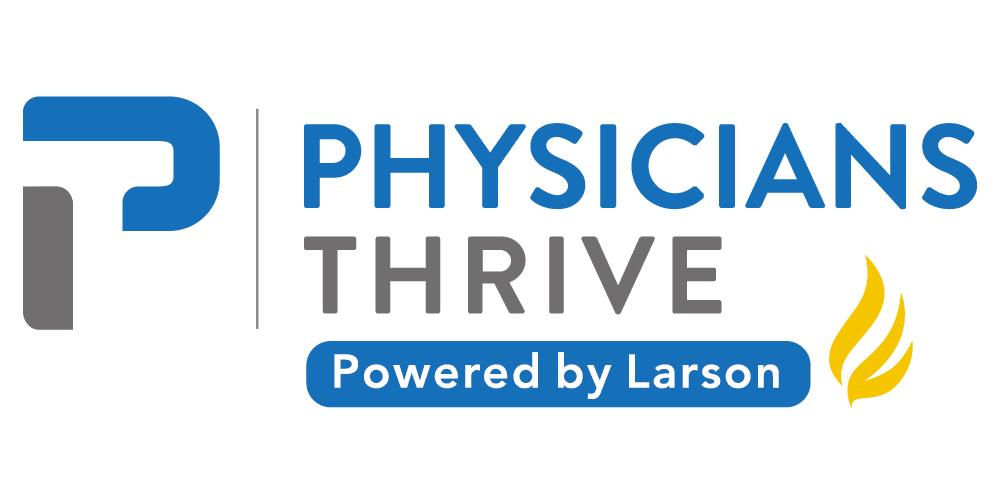Get a Quote
Get a Free Disability Insurance Quote
As a physician, protecting your income with disability insurance is essential. Physicians Thrive offers tailored coverage to safeguard your financial future.

What is Disability Insurance?
Disability insurance provides financial support when a disability prevents you from earning your regular income. It helps cover essential expenses like mortgage payments, tuition, and living costs, offering peace of mind during challenging times.
Physicians rely on their physical and mental abilities to practice medicine. A disability can halt your income stream, making it crucial to have a backup plan.
- High Earning Potential: Protect your career’s value and financial future.
- Significant Financial Obligations: Cover student loans, mortgages, and living costs.
- Unique Risks: Physicians face distinct occupational hazards that heighten the need for coverage.
Disability insurance ensures you can focus on recovery without financial strain, whether your disability lasts weeks, months, or years.
Income Replacement
Covers a portion of your income if you’re unable to work.
Financial Stability
Ensures you can meet expenses and maintain your lifestyle.
Long-Term Protection
Shields your career’s earning potential from unforeseen risks.
Good to Know
Frequently Asked Questions
Key insights to navigate disability insurance and secure your income.
What is true-own occupation disability insurance?
It protects your ability to earn in your specific medical specialty, even if you can work elsewhere.
Do I need individual coverage if my employer offers a group plan?
Yes, employer plans often lack portability and may not offer comprehensive benefits.
Are disability insurance benefits taxable?
Benefits from employer-paid plans are taxable, while benefits from personally funded policies are tax-free.
What is Disability Insurance & How Does It Work?
Disability insurance provides financial protection if a policyholder becomes unable to work due to a disability (injury or sickness). If you’re unable to work, disability insurance pays a portion of your income to insulate you from financial hardship.
Essentially, DI is income insurance that provides a safety net in the instance you can no longer generate income.
In this article, we will breakdown the different types of disability insurance, why physicians need disability insurance, and the benefits of private insurance over group or employer-sponsored plans.
Table of Contents
Basic Types of Disability Insurance

Long-Term Disability Insurance
Long-term disability insurance covers disabilities that last longer than a few months, the exact length is determined by the insurer, but it is often a minimum of six months.
Depending on the policy, benefits are paid out until the policyholder can work again, until retirement age, or until the expiration of a predetermined term.
Long-term disability insurance comes with a longer elimination period (the waiting period before you start receiving benefits), ranging anywhere from a month all the way up to two years.
The benefit amount varies based on insurance plans, but the monthly benefit of a long-term policy typically covers between 40% and 60% of the policyholder’s salary.
According to the Social Security Administration, more than 1 in 4 Americans will face disability at some point in their career. If you’re the sole breadwinner for your family, like many physicians are, it is vital to protect your income with long-term disability insurance.
Short-Term Disability Insurance
Short-term disability coverage is for disabilities that last up to a few months. The payout is typically higher than long-term disability and is around 60% to 70% of the policyholder’s salary.
The elimination period is relatively short with short-term policies, with it sometimes being less than two weeks.
While a short-term disability will likely have less of a financial impact compared to a long-term disability, many professionals find the peace of mind that comes with short-term disability insurance is worth the investment.
Social Security Disability Insurance
Social Security Disability Insurance (SSDI) is a tax-payer funded initiative controlled by the Social Security Administration. SSDI is typically very difficult to qualify for because of their stringent definition of disability.
The benefit amount is significantly lower than a physician’s typical salary. The average monthly benefit in January 2019 was just $1,234 per month, and the maximum was $2,861.
Could your family afford your current lifestyle on less than $3,000 per month? For most families, especially high-income households, the answer is no.
For these reasons and many others, we do not suggest relying on SSDI.
Why You Need Disability Insurance
As a physician, you need to be able to physically do your job.
Whether you’re a surgeon that relies upon your steady hands or a D.O. with a family practice, suffering a disability can prevent you from doing your job.
Anyone in any career can benefit from having disability insurance, but it’s especially crucial for physicians.
If you’re just starting your medical career, you’re likely struggling to pay back students loan and medical school debt. If you’re advanced in your career, you probably have mortgage payments, car payments, and lifestyle expenses that you need to pay for.
Every one of us is at risk of suffering a disability that prevents us from working. With disability insurance, you can protect yourself and avoid sinking into financial debt.
Whether you’re out of work for a few weeks or a few years, having the right type of disability insurance can save you and your family from financial ruin. Your financial obligations will always exist, regardless of whether or not you are physically capable of doing your job.
By having disability insurance, you can protect yourself and your assets, even if you can’t earn a paycheck. It’s the best way to make sure that you can keep up with your car payments, pay your mortgage so you can remain in your home, and pay for other monthly expenses.
For many people, disability insurance keeps the dream of sending their kids to college alive. It keeps a roof over their heads. And it keeps the option of retirement on the table.
How Disability Insurance Protects Your Financial Goals
I’ve been in the financial services industry for a little over ten years. Over this time, I’ve made a few observations. One common observation is that while we each have our own unique goals and things that are important to us, generally speaking, we all tend to want the same things.
Whether it’s the desire to pay off debt early or travel regularly, we all want to be able to afford things that will allow us to create memories and have meaningful experiences with family and friends.
Whatever your goals, they usually take money to accomplish.
At Physicians Thrive, we give presentations across the country to doctors in training and physicians in practice to educate physicians in areas that they don’t get much time to focus on.
At the end of our presentations, the questions range from student loan repayment options to ways to reduce taxes to questions about investing. All of these questions are predicated on the assumption that the person asking will continue earning a steady income.
As a physician, your most significant financial asset is your earnings potential. You’ve spent countless hours crafting your career and preparing to transition into practice. And you assume those years of hard work will lead to years of above-average income.
But what if, your income stopped, or was reduced due to illness or injury?
How would you handle a significant loss of income?
One study revealed that nearly 1 in 5 Americans are living with a disability. Now, this sampling includes individuals from all age groups, but that number is still staggering.
Even more surprising is that just over 1 in 4 20 year-olds today will become disabled before they retire.
Needless to say, you’re chances of missing a paycheck (or many paychecks) due to illness or injury are higher than most think.
For example, if you’re 35 years old, there’s a 50% chance of becoming disabled for three months or longer before you retire.
That number is only reduced to a 33% chance if you’re 50.
You’re able to protect yourself, and all your hard work, by taking a relatively easy step: investing in disability insurance.
When you purchase disability insurance, you simply transfer the risk of the possibility of losing your ability to earn income to an insurance company.
That way, if you ever become disabled, the insurance company will be responsible for covering part of your income.
Having disability insurance should be an obvious decision for any physician who wants to continue earning money regardless of their health.
Important Components of Disability Insurance for Physicians
True-Own Occupation Disability Insurance
Most employers offer disability insurance in the form of a group plan, but there are many deficiencies in group disability insurance that you should be aware of.
Most of the time, group disability coverage doesn’t really protect you because it doesn’t allow you to work in any occupation.
The most important feature regarding disability insurance for physicians is having what’s called true-own occupation disability insurance.
True-own occupation disability insurance protects you in the event you’re not able to do the material and substantial duties of your own occupation, even though you may be able to work in another area of medicine or a different career altogether.
In this case, if you’re not able to do the material and substantial duties of your primary occupation, you’ll continue to receive a paycheck from the insurance company even if you’re earning an income from working in another specialty or profession.
Residual Disability Coverage
The second most important feature to have is what’s called residual disability coverage.
This feature provides protection in the event you become partially disabled but are still able to work in your primary specialty.
Residual disability coverage eliminates the “all or nothing” assumption regarding disability insurance by providing a partial benefit to you in the event you have a 15 or 20% reduction of income due to illness or injury and you’re under the care of a physician.
For instance, if you have a disability that only allows you to work limited hours, residual disability insurance will cover part of your losses.
Disability Insurance and Taxes
Another thing to be aware of is how your disability benefit or paycheck from the insurance company is taxed.
If your employer pays for the disability insurance, which is usually the case, any benefit you receive is 100% taxable as ordinary income.
This means that if you have a $10,000/month benefit, after you pay taxes, you may only actually be getting a benefit worth $6,500/month.
For this reason and many others, individual disability policies are usually the way to go when it comes to getting the coverage you need.
Disability benefits received from an individual insurance policy are tax-free. This provides dollar for dollar protection on any coverage you have through an individual policy.
Protecting your lifetime earnings potential is among the top of the financial essentials when it comes to overall financial planning.
I’ve highlighted a few of the things you need to be aware of regarding disability insurance for physicians and needless to say, there are many more.
If you have any questions or would like to go over the other things to know, connect with us and we look forward to helping you simplify your life.








































